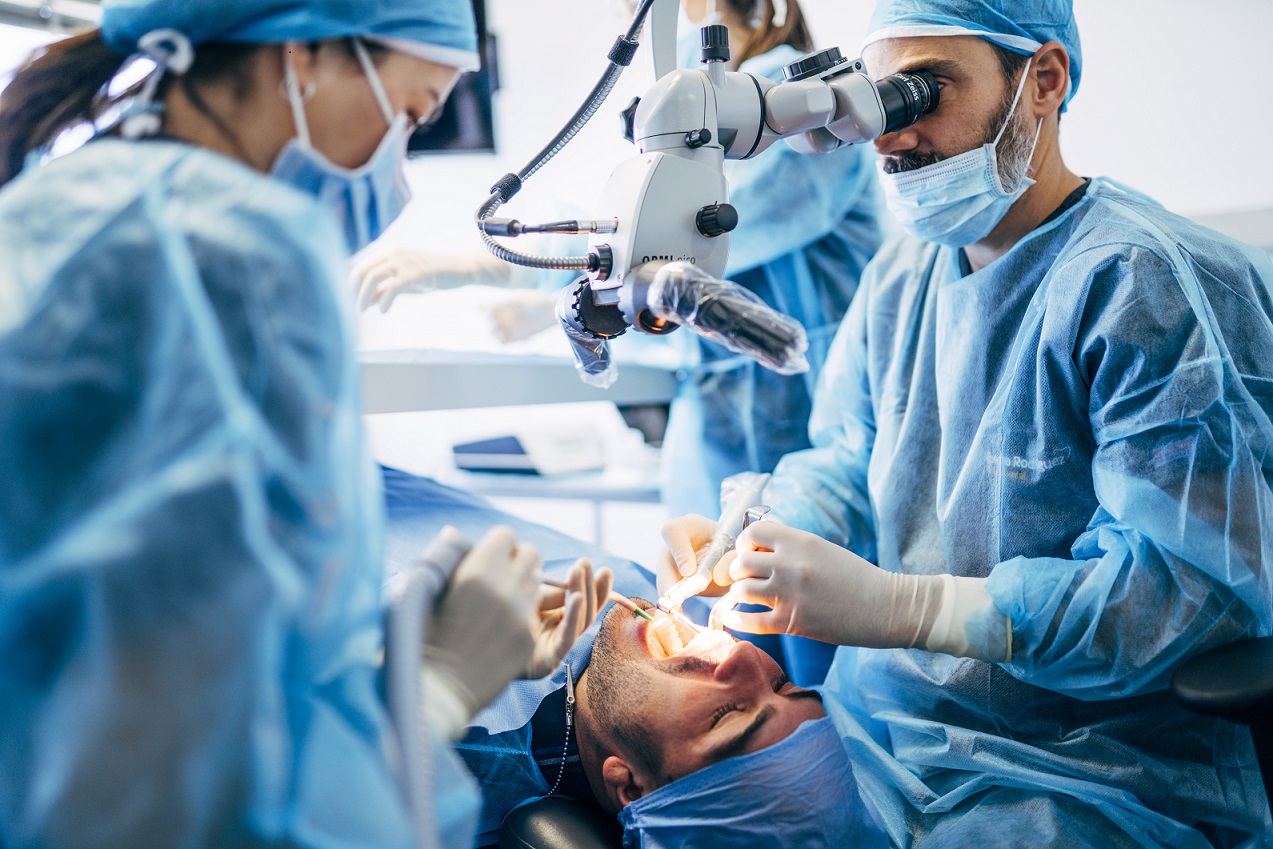Tooth extractions are among the most commonly performed procedures in dentistry. While they may sound intimidating, many extractions are straightforward and performed in a general dental office. However, in certain cases, patients may be referred to an oral surgeon due to the complexity of the situation or specific medical considerations.
Understanding the difference between a simple extraction and a surgical one—and knowing when an oral surgeon is required—can help you feel more prepared if your dentist recommends removing a tooth.
What Is a Tooth Extraction?
A tooth extraction involves removing a tooth from its socket in the jawbone. Dentists typically recommend this procedure when a tooth is severely decayed, damaged beyond repair, infected, or contributing to overcrowding. In some cases, extractions are also performed to prepare the mouth for orthodontic treatment or dentures.
While preserving natural teeth is always a priority, there are circumstances where extraction is the best option to prevent further oral health complications.
Simple vs. Surgical Extraction: What’s the Difference?
There are two primary types of extractions—simple and surgical. The type required depends on the condition and position of the tooth.
Simple Extraction
A simple extraction is typically performed on a tooth that is fully visible and has a straightforward root structure. The process involves numbing the area with local anesthesia, loosening the tooth with an instrument called an elevator, and removing it with dental forceps.
Common Reasons for Simple Extractions Include
- Severely decayed but intact teeth
- Teeth with loosened attachments due to gum disease
- Teeth removed as part of orthodontic treatment
- Simple extractions are often completed in one visit and typically have a shorter recovery time.
Surgical Extraction
A surgical extraction is more complex and is usually required when:
- A tooth is broken at the gumline
- The tooth is impacted (such as many wisdom teeth)
- The tooth has curved or multiple roots
- Bone needs to be removed to access the tooth
This procedure may involve making an incision in the gum, removing surrounding bone, or sectioning the tooth into smaller parts. Surgical extractions often require a longer recovery and more postoperative care.
When Is an Oral Surgeon Required?
Not every extraction demands the expertise of an oral surgeon. General dentists perform many simple and even some surgical extractions. However, certain cases do benefit from a specialist’s advanced training and equipment.
Situations That May Warrant Referral to An Oral Surgeon Include
- Impacted teeth: Wisdom teeth that haven’t fully erupted are common examples. These are often surrounded by bone or tissue and need precise surgical removal.
- Teeth with complex roots: Teeth with long, curved, or multiple roots can be more difficult to extract safely.
- Fractured or decayed teeth below the gumline: When little to no crown is visible, surgical techniques may be necessary.
- Patients with medical conditions: Individuals with heart conditions, bleeding disorders, or weakened immune systems may require the care of a surgical specialist.
- Anxiety or the need for advanced sedation: Oral surgeons are equipped to provide deep sedation or general anesthesia when appropriate.
While your general dentist is often the first point of contact, they will recommend an oral surgeon if your case would benefit from specialist care.
What Happens During a Tooth Extraction?
- Initial Evaluation: The process typically begins with a comprehensive dental exam and X-rays. These help assess the tooth’s position, the condition of the surrounding bone, and any potential complications.
- Anesthesia and Sedation: For simple extractions, local anesthesia is usually sufficient. For surgical procedures—or for patients with dental anxiety—sedation or general anesthesia may be used to ensure comfort and safety.
- The Extraction Process
- Simple extraction: The dentist numbs the area, loosens the tooth, and removes it.
- Surgical extraction: A small incision may be made in the gum. Bone may be removed, and the tooth may be cut into sections before removal.
- Post-Extraction Care: Once the tooth is removed, gauze is placed on the site to control bleeding. Patients receive aftercare instructions, which typically include tips on pain management, swelling reduction, and dietary restrictions.
Tooth Extraction Recovery: What to Expect
Recovery timelines vary based on the type of extraction and individual healing capacity.
After a Simple Extraction
- Initial healing occurs within 24 to 72 hours
- Minimal swelling or discomfort
- Patients can often return to normal activities the next day
After a Surgical Extraction
- Recovery may take 5 to 7 days for initial healing
- Swelling and mild discomfort are more common
- Complete healing can take a few weeks
Helpful Tips for Recovery
- Avoid smoking and drinking through a straw
- Stick to soft, cool foods initially (e.g., yogurt, mashed potatoes)
- Take medications as prescribed or recommended by your provider
- Keep the area clean but avoid vigorous rinsing in the first 24 hours
Tooth Extraction Costs: What Factors Affect the Price?
Tooth extraction costs can vary widely depending on the complexity of the case, geographic location, and the type of anesthesia used.
Here’s a General Estimate
| Procedure Type | Estimated Cost (USD) |
| Simple Extraction | $100–$300 per tooth |
| Surgical Extraction | $250–$600 per tooth |
| Impacted Wisdom Tooth Removal | $300–$800 per tooth |
Note: Dental insurance may cover part or all of the procedure, especially if it’s medically necessary. Patients are encouraged to check their benefits and discuss costs with the dental office beforehand.
Will You Need a Tooth Replacement?
Not all extracted teeth require replacement, but in many cases—especially for molars or front teeth—a replacement option is recommended to preserve function and appearance.
Common Tooth Replacement Options Include
- Dental implants
- Fixed bridges
- Removable partial dentures
These help maintain proper chewing function, prevent shifting of remaining teeth, and support facial structure.
Final Thoughts
Tooth extractions are a safe and common dental procedure. While many can be managed by general dentists, certain complex cases may benefit from an oral surgeon’s expertise. Knowing the difference between simple and surgical extractions—and understanding when a specialist is necessary—can help you make informed decisions about your dental care.
If you’re experiencing dental pain or suspect a tooth may need to be removed, consult your local dental provider for a personalized evaluation. They will guide you through the best course of action based on your specific needs and oral health condition.
Schedule Your Tooth Extraction Today!
At Chesapeake Dental Specialists, our experienced team takes a comprehensive, patient-first approach to every case. We evaluate your unique needs, provide clear explanations, and work with trusted oral surgeons when necessary to ensure your safety, comfort, and the best possible outcome.
If you’re experiencing tooth pain, have been advised to undergo a tooth extraction, or want a second opinion—we’re here to help. Contact us today to schedule a consultation and take the next step toward a healthier, pain-free smile.
FAQs
How do I know if I need a simple or surgical tooth extraction?
A dental examination, supported by X-rays, is the best way to determine whether your case qualifies for a simple vs surgical extraction. Generally, visible and fully erupted teeth without root complications can be removed with a simple extraction.
Can I request to be sedated during a tooth extraction?
Yes, sedation options are available for patients undergoing tooth extractions—particularly for surgical procedures or patients with dental anxiety.
Are there any risks associated with tooth extractions?
While tooth extractions are considered safe when performed by qualified dental professionals, there are potential risks, especially with surgical procedures. These include dry socket, infection, nerve injury, prolonged bleeding, or sinus complications (particularly with upper molars).
What is dry socket, and how can I prevent it?
Dry socket (alveolar osteitis) is a common complication that can occur after a tooth extraction when the blood clot at the site dislodges or fails to form properly. This exposes the underlying bone and nerves, causing intense pain. You can reduce your risk by:
- Avoiding smoking or vaping for at least 48–72 hours
- Not using straws or forceful spitting
- Following all aftercare instructions
- Keeping the area clean without disturbing the extraction site
How long after a tooth extraction can I eat normally?
After a simple extraction, patients can usually resume normal eating habits within 24–48 hours, starting with soft foods like yogurt, mashed potatoes, or scrambled eggs. Surgical extractions require a longer recovery—typically 5 to 7 days before returning to regular foods. Avoid hard, crunchy, spicy, or hot foods during initial healing.



